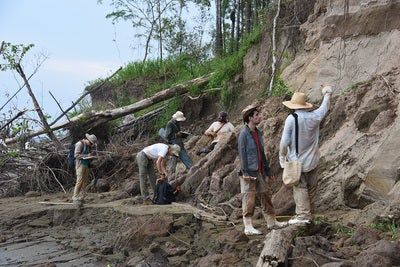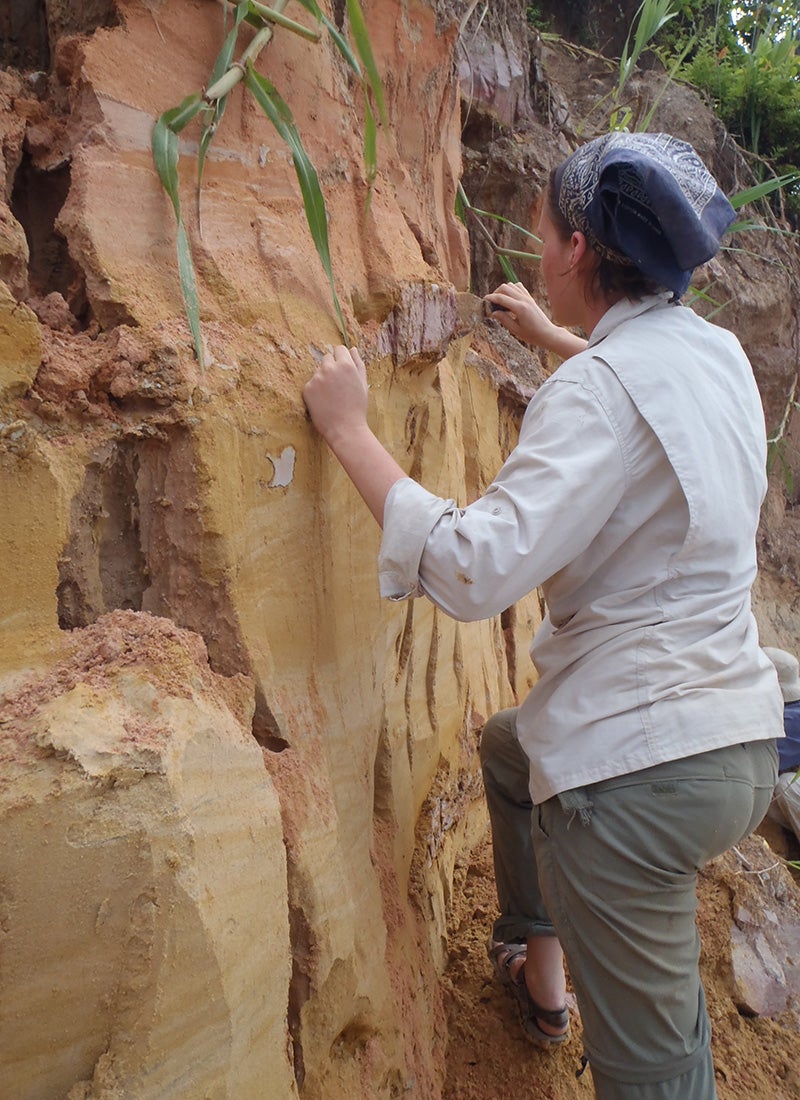 Editor's note: Graduate student Julia Cisneros and Vanessa Gabel conducted research on the Amazon River with geology professor James Best. Many LAS undergraduate and graduate students conduct research in the field each year. This blog post originally appeared on the Illinois News Bureau's website.
Editor's note: Graduate student Julia Cisneros and Vanessa Gabel conducted research on the Amazon River with geology professor James Best. Many LAS undergraduate and graduate students conduct research in the field each year. This blog post originally appeared on the Illinois News Bureau's website.
I wake up to the sound of the engine running. The cook needs power to begin making breakfast at 4:30 a.m., and the captain begins steering the boat to where we will examine the riverbanks. I get dressed, wearing a long-sleeved shirt and pants tinged with the red of the rocks we have studied – their iron stain is slowly becoming the main color of my wardrobe.
I come downstairs, and our Brazilian lead scientist, Renato, is the first to say “Bom día,” “Good morning.” Everyone else chimes in from around a table filled with fruits, breads, and coffee.
Soon, we all begin grabbing water bottles and putting on boots and sunscreen so we waste no time getting onshore. We pile into a smaller boat, supplies in tote, in order to reach our first site on the riverbank.
This time, the boat ride is longer than usual because we want to travel to a part of the river that is upstream from where we docked. We are in search of ancient deposits of the Solimões River that can tell us what the river was like in the distant past.

Illinois undergraduate Vanessa Gabel scrapes off the surface of a cliff exposure to reveal its ancient sedimentary features. Photo by Julia Cisneros.
Vanessa and Jim are the first to the sediment cliffs. They take in the stunning view of the river, with the early morning sun reflecting off the water surface and shining golden rays onto the cliff face.
Vanessa then starts scraping away at the soft sand and mud with her trowel, to begin revealing its ancient history. We’re studying the geological makeup of the deposits and quantifying which way the paleo-Solimões flowed, in order to build a picture of how the Amazon’s rivers have changed over time.
It’s painstaking work, as the river is huge and the temperature is 95 degrees Fahrenheit with high humidity. But slowly, the deposits are uncovered, and with each scrape of each new riverbank, more of this remarkable story unfolds on the ancient deposits of the world’s mightiest river.
The College of Liberal Arts & Sciences at the University of Illinois at Urbana-Champaign offers more than 70 majors and provides a world-class interdisciplinary education that prepares students for lives of impact. Learn more about LAS.